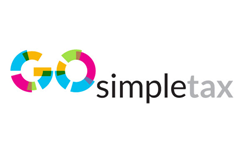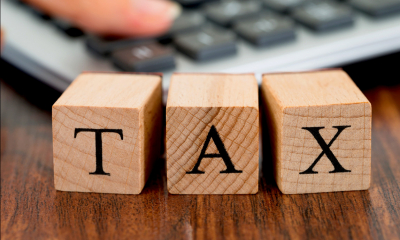
If you have paid too much tax, you'll want to claim a refund (tax rebate) as soon as possible. You may also want to claim a tax rebate if you have made trading losses as a sole trader or business. Trading losses occur when business expenses are greater than business income. A business may become loss-making at any time - but the most common losses occur when a business is in the start-up phase
There are different ways to claim a tax rebate or refund, depending on how you are taxed and which year you want a tax refund for.
Claim a tax rebate as an employee for this tax year
If you are an employee and you are paying too much tax, it usually means that your tax code needs changing.
You should check your personal tax account to see what your code is. You can use your personal tax account to tell HMRC about any changes that affect your tax. Once your tax code has been adjusted, any overpayment of tax will be refunded in the pay you receive from your employer.
Overpayment can happen, for example, when you have a new job and are given an emergency tax code. Once your employer has the information they need about your previous income, your tax code will be updated.
Claim a tax rebate as an employee for the last tax year
If you are only paid through PAYE, HMRC should tell you if they think you have paid too much tax. They do this by sending you a P800. This gives details of your income, the tax you should have paid, and any overpayment or underpayment.
If you haven't received a P800, you can check your personal tax account online. Make sure HMRC's tax calculation matches your own records. If it's wrong, contact HMRC on 0300 200 3300. If they agree with you, they will update their records and send you a P800 telling you how to get your tax refund. You will either get a cheque automatically or will need to make a claim online.
Making claims for earlier tax years
If you think you may have overpaid in an earlier year, your first step is to check what you paid and how much you think your tax bill should have been.
If you use tax return software, this should have details of all your income and a calculation of how much tax is due.
You can also ask a tax expert, such as an accountant, to review your financial records and assess what your tax bill should be. An expert can give you face-to-face advice and check whether you are missing any opportunities to reduce the tax you pay. The cost is typically £250 upwards, depending on how complicated your tax affairs are.
If you think you are due a refund, contact HMRC either through your online account or by phone. You must make your claim within four years from the end of the tax year that you want a refund for.
If you think you might be entitled to a tax refund for other kinds of income (for example, pension or redundancy payments), use HMRC's claim a tax refund service to find out how.
Claim a tax rebate as a sole trader or partnership
There's a different system if you are self-employed and pay tax through self assessment. HMRC does not send out a P800. Instead, HMRC should refund you automatically. If not, you can either request a repayment through your online tax account or contact HMRC to request to refund.
The tax payments you make include two payments on account, based on your tax bill for the previous year. If your income falls – for example, because your business becomes less profitable – these payments on account might be too high. You can ask HMRC to reduce your payments on account if you know your tax bill is going to be lower. But if that means you end up paying less than you need to, you will be charged interest on the underpayment.
The easiest way and quickest way to claim a tax refund is through your personal tax return. For this, you need to be trading as a sole trader or partnership. The claim is the same for both. There are four ways to set off a loss:
- You can claim relief against any other income for this tax year, the previous tax year or both. If your income is nil or less than the loss, you can reduce your capital gains for that year.
- You can carry back losses incurred in the first four years of a trade for three years. You need to make sure your claim is made within the time limit.
- You can claim relief against profits of the same trade in earlier years.
- You can carry forward the loss against future profits of the same trade.
 New tax year – new you
New tax year – new you
You can file your self-assessment from the 6th April. Know your tax owed and start the tax year in control.
For self-employed individuals, sole traders, or those with non-PAYE income, GoSimpleTax provides direct self-assessment filing with HMRC, offering helpful hints and savings tips throughout the process. Let GoSimpleTax handle all calculations.
Claiming for loss relief against income
Normally, you'll make your claim for loss relief in your Self Assessment tax return. For sole traders, if you complete the short self-employment pages, you need to fill in boxes 33-35, or boxes 77-80 in the long self-employment pages. If you are in a partnership, fill in boxes 21-24 on your partnership pages.
If you're carrying back losses, you need to provide additional information in the ‘any other information’ box. This can be done on the self-employment page or on the tax return. You need to state the following:
- the earlier year, and if the loss is carried back to more than one earlier year
- the amount of loss to be deducted in calculating your net income for each earlier year
Making tax adjustments for earlier years
This is more complicated. If you're claiming loss relief in respective of earlier year(s), you need to calculate the amount of the tax refund.
- You must calculate the difference between the actual tax liability and the liability that would have arisen for each earlier year.
- Enter the amount of the tax refund. Put this figure in box 15 on the tax calculation summary pages of a paper return. For an online return, you need to complete the ‘decrease in tax due because of adjustment to an earlier year’ box. This will trigger the loss relief claim.
Carrying forward the loss against future profits
You can also carry forward your loss, or the unused part of the loss, against future trading profits. Or, you can carry forward your loss, or the unused part of the loss against income from a company, provided that
- you transferred your business to the company in exchange for shares;
- you still own the shares.
You must deduct the loss from profit in the trade, or income from the company, in the following year and each subsequent year until the loss is used up.
Making claims outside your personal tax return
In certain circumstances you may want to make a claim in advance of the tax return. This is known as a 'stand alone claim'. In this case, you must write a letter telling HMRC the following details:
- the name of your trade
- how much the loss is and for what period
- how you want to use the loss
You must also repeat the claim in your tax return for the year of loss and give details of the tax repaid or set-off in the ‘any other information’ box on the self-employment pages or on the tax return.
Claiming tax relief when you have stopped trading
If your trade ceased, and you made a loss in the final 12 months of the trade, you can claim relief against profits in the final year of trading. If any loss remains, use this against profit in the trade in the three prior years. Start with the latest year.
You can find more guidance in the HMRC Helpsheet 227 Losses.
Claiming a tax refund for company losses
Trading losses can be offset against profits from the same trade in future accounting periods. You don’t have to make a claim for this. The claim is done automatically when you fill out your Company Tax Return. However, if you carry forward your company losses you will have to wait until the company is profitable. So, you may have to wait a while to claim your tax refund.
Instead of carrying a loss forward, you can claim for the loss to be offset against profits for the preceding 12-month period - but only if your company existed in the preceding 12-month period. This will not work if you are a start-up.
Capital allowances
One more thing to consider when calculating your losses is capital allowances. Is it better to claim full capital allowances to maximise your tax loss? Or, would you be better carrying forward a larger asset pool to reduce your tax bill in the future?
Making Tax Digital
The government is gradually introducing Making Tax Digital, a new system for keeping digital records and sending information to HMRC using software. You must meet the requirements for Making Tax Digital for Income Tax from 6 April 2026 if you have a gross trading or gross rental income of more than £50,000 per year.
With Making Tax Digital, you should be less likely to make errors. Information is automatically sent to HMRC rather than needing to complete a self assessment tax return.
You send HMRC information more often – at least every three months, or more often if you want. This gives HMRC an up-to-date picture of your income and what tax you should be paying.
This may also help you avoid the year-end rush to get your records up to date and complete your self assessment return. But it may also mean extra work during the year, particularly when you are getting used to the new system.
You don't have to use Making Tax Digital for income tax yet, the Government has postponed Making Tax Digital until 6 April 2026. But you can join Making Tax Digital income tax now if you want to.
You can find out more with HMRC's help and support for Making Tax Digital.
Written by Claire Georghiades FCA and reviewed by Mike Parkes, technical director, GoSimple Software


